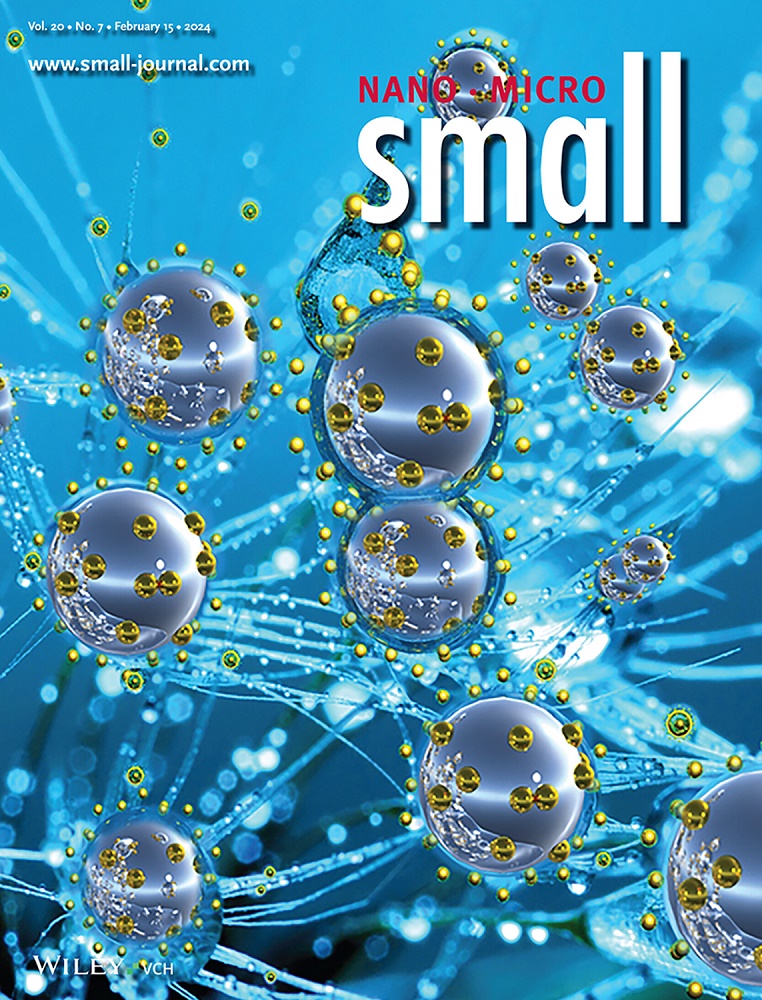Novel High-Throughput Electrochemical Detection of Staphylococcus Aureus, Bacillus Cereus, or Micrococcus Luteus Using AuNPs@Ti3C2Tz Functionalized with Sandwich Peptides
IF 13
2区 材料科学
Q1 CHEMISTRY, MULTIDISCIPLINARY
引用次数: 0
Abstract
Affinity-based electrochemical biosensors hold promise for detecting pathogenic bacteria in environmental applications. This study focuses on detecting gram-positive bacteria, which can cause fatal infections and are a major global mortality factor. An electrochemical biosensor platform using high-throughput 16-channel gold disk electrodes (16-GDEs) inspired by bio-microelectromechanical systems (BioMEMS) is developed, it incorporates a nanocomposite (AuNPs@Ti3C2Tz) with sandwich peptide structures to enhance electroconductivity and biological antifouling. Using AuNPs@Ti3C2Tz-coated 16-GDEs, sensitive biosensors for gram-positive bacteria (Staphylococcus aureus, Bacillus cereus, or Micrococcus luteus) are constructed and validated in fresh-water samples by spiking with bacteria, which showed linear correlations between normalized peak current and logarithmic concentrations of the target bacteria (adjusted R-square ≥ 0.93). A single high-throughput platform containing biosensors for S. aureus, M. luteus, or B. cereus is also developed, exhibiting specific responses without any cross-reactivity in real samples. This platform enabled sensitive simultaneous detection of multiple analytes in environmental samples (500 CFU mL⁻¹) and can be applied to detect any target analyte with a suitable peptide pair. The strategy is to implement a quantitative real-time polymerase chain reaction (RT-qPCR) adaptive sensing device to successfully detect gram-positive bacteria. The nanocomposite-enabled electrochemical biosensor platform on 16-GDEs offers a valuable tool for environmental and clinical diagnostics.

求助全文
约1分钟内获得全文
求助全文
来源期刊

Small
工程技术-材料科学:综合
CiteScore
17.70
自引率
3.80%
发文量
1830
审稿时长
2.1 months
期刊介绍:
Small serves as an exceptional platform for both experimental and theoretical studies in fundamental and applied interdisciplinary research at the nano- and microscale. The journal offers a compelling mix of peer-reviewed Research Articles, Reviews, Perspectives, and Comments.
With a remarkable 2022 Journal Impact Factor of 13.3 (Journal Citation Reports from Clarivate Analytics, 2023), Small remains among the top multidisciplinary journals, covering a wide range of topics at the interface of materials science, chemistry, physics, engineering, medicine, and biology.
Small's readership includes biochemists, biologists, biomedical scientists, chemists, engineers, information technologists, materials scientists, physicists, and theoreticians alike.
 求助内容:
求助内容: 应助结果提醒方式:
应助结果提醒方式:


